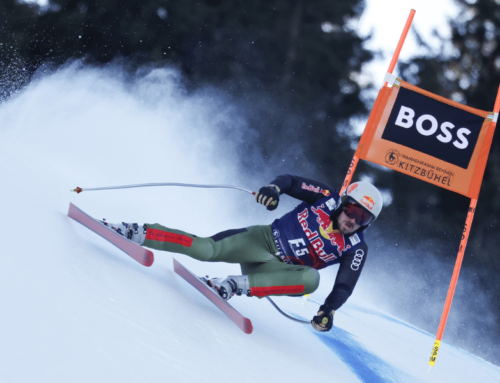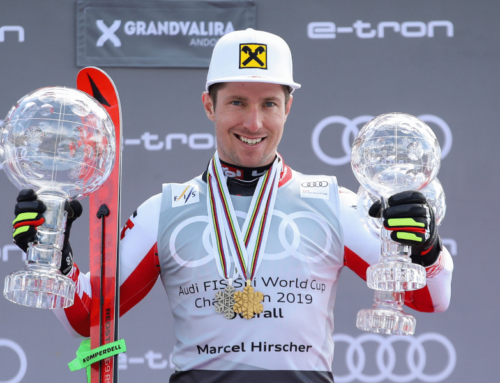Past winner McKennis Duran talks us through St. Anton

The women’s World Cup in Saint Anton, Austria can be summed up in three words: “Eisfall into Fang.” In English, it’s the “ice fall,” a 78% drop that’s essentially a waterfall in summer and runs into the “Catch” — as in, the place where opportunistic anglers lay in wait. Many would argue it is the toughest section of a women’s downhill anywhere in the world. If you threw Garmisch’s ice and flat light on it, the section would be the uncontested bane of the fainthearted anywhere on the circuit.
But the Karl Schranz course, named after the town’s most celebrated skier, is not a regular stop. In fact, the women’s speed tour has swung through only nine times since the dawn of the World Cup and just twice in the last dozen years. And, if you’ll forgive the hyperbole, the U.S. has been undefeated during that stretch.

Lindsey Vonn won in 2007 and Alice McKennis Duran won in 2013, followed by four more teammates in the top 15. Unfortunately, there won’t be five Americans starting this time around. Keely Cashman took a crash in training and will miss the weekend; it’s unclear at this point when she will return. Laurenne Ross is just returning to action after straining her left knee during a November crash, along with Jackie Wiles who recently had surgery to repair the clavicle she broke in Val d’Isere just before Christmas. Both are in St. Anton but unlikely to race.
And, of course, Alice is out for the season and has not made any decisions about her future. Look for our conversation about her career, life, and the inherent dangers of alpine skiing on my Alpine Waxroom podcast soon to be released. She might go down as the most resilient athlete in the history of the sport. Her injuries have been nothing short of catastrophic, requiring surgeries in nine of the 12 years she raced on the U.S. team. But when she was healthy, she was a threat, winning the opening training run and the race in St. Anton seven years ago. So, who better than to give us preview:
“The icefall … it’s like dropping off the edge of the earth,” says McKennis Duran. “The direction is 12 o’clock, and you have to make this quick switch right after you come off the right-footer on the fence. … It’s definitely one of the most intimidating visuals in downhill. Then, the compression at the bottom is gnarly, and you go into this left-footer; I forget what it’s called there, but it’s super heavy.”
That’s the “Catch,” and to nail it is to give yourself a chance at winning. To attempt to nail it takes courage and commitment that only a select few can summon.
“(Sofia) Goggia, for sure, is a threat there. She just goes for it no matter what,” Alice said. “And (Corinne) Suter is so stable and solid right now. She can be way back in training, but she rises to the occasion on race day. And I think (Nina) Ortlieb could be one to watch. That’s kind of in her backyard and some of the Austrians race on that hill … so they have a bit more experience on it. … And Ester (Ledecka) — we trained with her a bit this summer. The visibility was awful, and she has no fear whatsoever. I saw her beat it in a few times; she just didn’t give a shit. … She’s an amazing athlete and technically she’s gotten better and better.”
McKennis Duran offered up the same kudos to her teammate Breezy Johnson:
“She’s improved quite a bit technically, and I’ve been really impressed with her versatility across conditions and scenarios. And she is super strong. She’s worked really hard on her strength.”

This particular venue calls on power more than endurance at under 90 seconds, but it’s 90 seconds of action. In fact, the most recent Europa Cup run here last year was a sprint downhill with two runs, each under a minute. In lieu of the many recent injuries, it’s worth noting that 45% of injuries among World Cup athletes take place in a race, which comprises about 10 percent of their overall skiing. Of those injuries, half take place in the last 25% of the course. Though it grates against the one-run tradition of speed — one that was established long before equipment generated the speeds and forces they do today — you’d have the excitement of the reverse-30 format with the potential bonus of mitigating injuries. … But I digress.





















